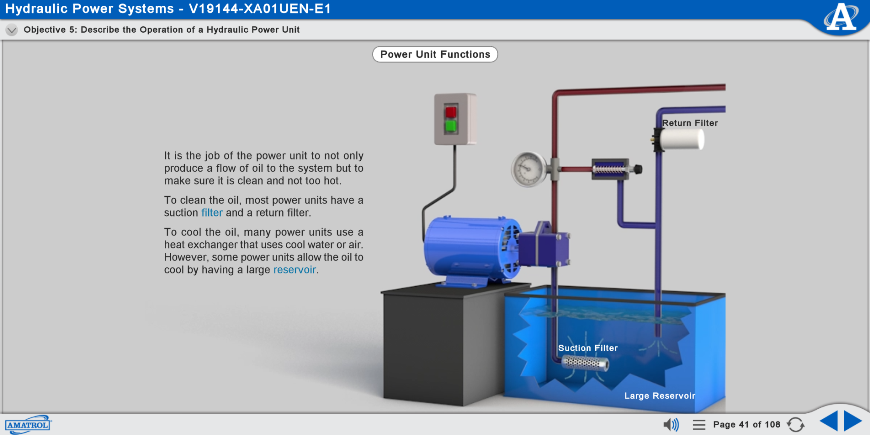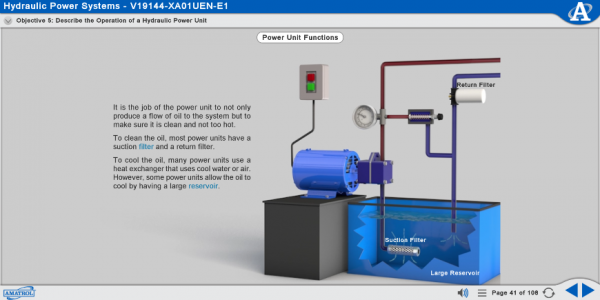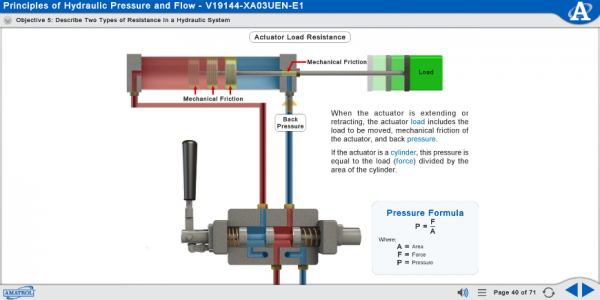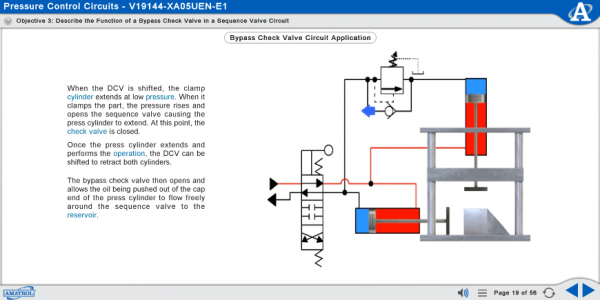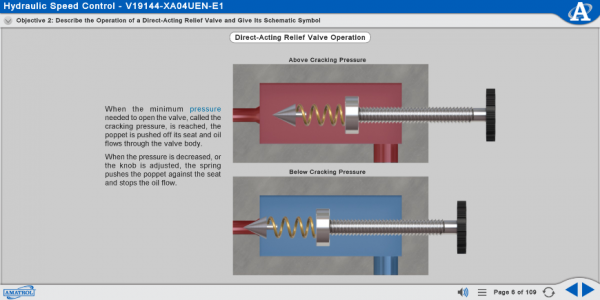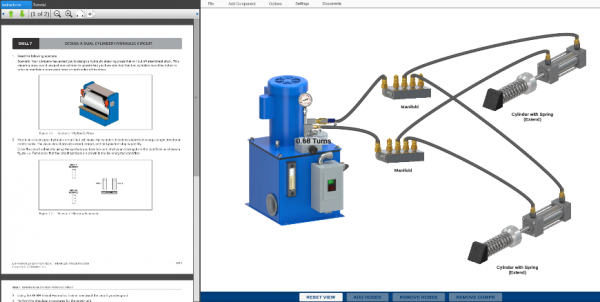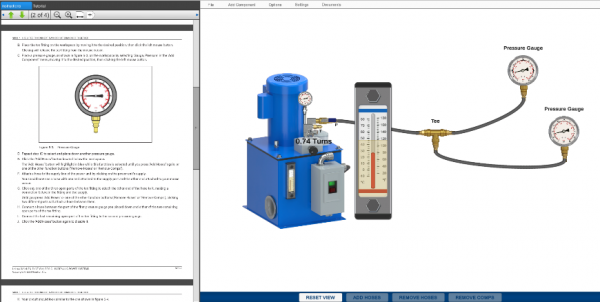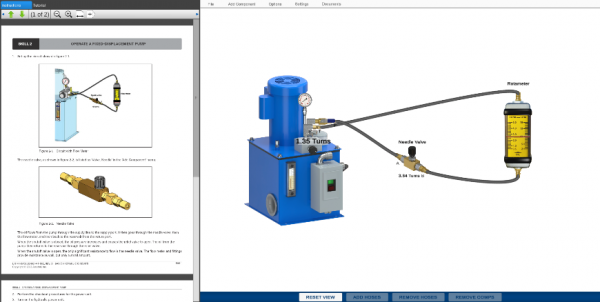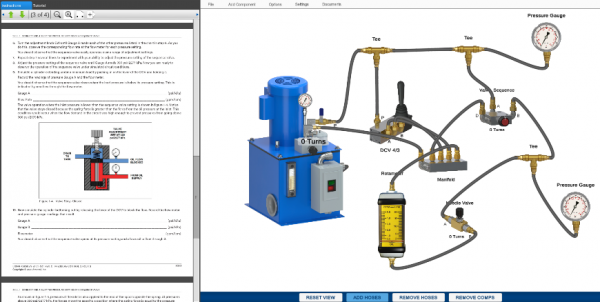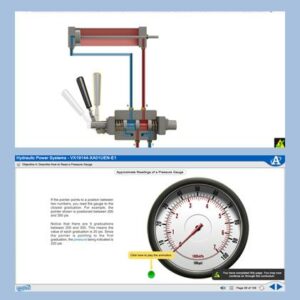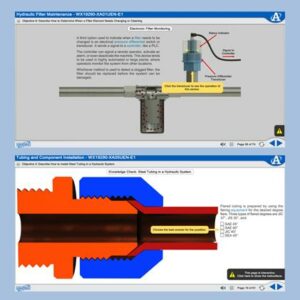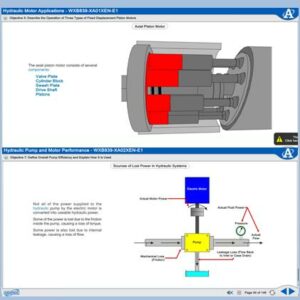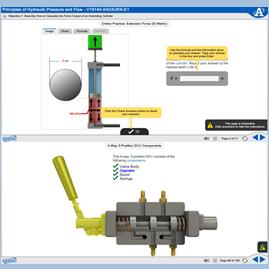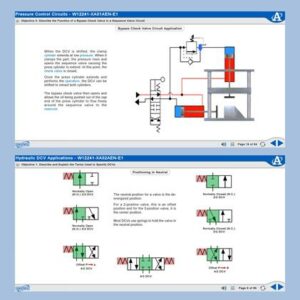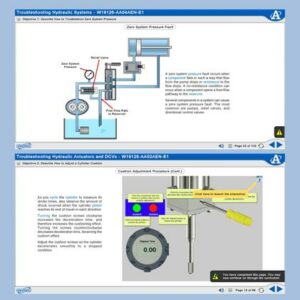Amatrol’s eLearning curriculum is unique in that it thoughtfully combines in-depth theoretical knowledge with practical, hands-on skills. This powerful combination of knowledge and skills solidifies understanding and creates a strong foundation for pursuing more advanced skills.
For example, the basic hydraulics eLearning course covers important topics, such as:
Hydraulic Power Systems
Learners begin with an introduction to hydraulics, including power unit operation, circuit connections, and basic cylinder circuits. Individual lessons focus on topics like hydraulic pressure, the five basic components of a hydraulic system, hydraulic schematics, and the function and operation of various types of hydraulic cylinders. Learners will also practice skills, such as reading a hydraulic pressure gauge, using a tee to connect two circuit branches together, and designing a dual cylinder hydraulic circuit.
Basic Hydraulic Circuits
Learners will study the components and operation of basic hydraulic circuits, including pumps, needle valves, basic motor circuits, and hydraulic schematics. Individual lessons focus on topics like flow rate, flow meters, fixed-displacement pumps, hydraulic motors, and hydraulic circuit schematics. Learners will also practice skills, such as controlling the speed of an actuator using a manually-operated directional control valve, connecting and operating a bi-directional hydraulic motor using a 3-position, manually-operated directional control valve, and designing and drawing a schematic for a multiple actuator hydraulic circuit.
Principles of Hydraulic Pressure and Flow
Learners using Amatrol’s basic hydraulics eLearning course will study basic principles of hydraulic pressure and flow, including pressure vs. cylinder force, hydraulic leverage, fluid friction, and absolute vs. gauge pressure. Individual lessons focus on topics like the force output of extending and retracting cylinders, Pascal’s Law, resistance in hydraulic systems, Delta P, and characteristics of circuit pressure drops. Learners will also practice skills, such as calculating the retraction force of a cylinder given its size and pressure, measuring Delta P across a hydraulic component, and converting between absolute pressure and gauge hydraulic pressure.
Hydraulic Speed Control
Learners will study various aspects and components of hydraulic speed control, including: relief, check, and flow control valves; meter-in and meter-out circuits; flow control circuit design; and flow rate vs. cylinder speed. Individual lessons focus on topics like the function and operation of various types of valves, operation and applications of meter-in and meter-out flow control circuits, independent speed control, and cylinder stroke time. Learners will also practice skills, such as connecting a relief valve in a circuit to limit pressure in the system, designing a circuit to provide bypass flow, connecting and adjusting a flow control valve to control speed of an actuator, and calculating the extend and retract speed of a hydraulic cylinder given its size and a flow rate.
Pressure Control Circuits
Learners using Amatrol’s basic hydraulics eLearning course will study various aspects and components of pressure control circuits, including sequence valves and pressure reducing valves. Individual lessons focus on topics like operation and applications of sequence valves, function and operation of bypass check valves and integral check valves, operation and applications of pressure reducing valves, and external draining of sequence and pressure reducing valves. Learners will also practice skills, such as connecting and operating a pressure sequence circuit, designing a two-sequence valve control circuit, and designing a hydraulic circuit that uses a pressure reducing valve.
